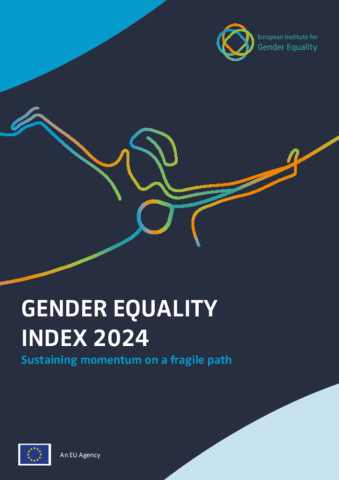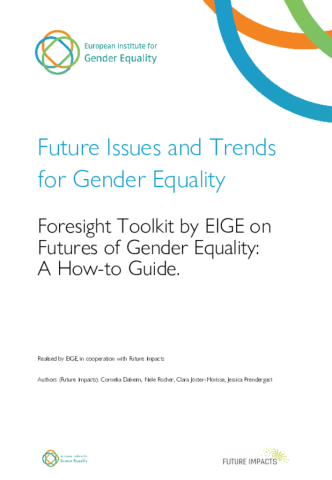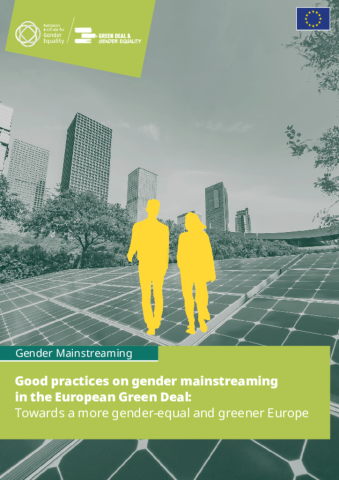
The share of women in decision-making positions is one important element in assessing the level of gender equality. That’s why the European Institute for Gender Equality (EIGE) measures how much power women hold in politics, economics and finance, research, sports and the media. Below you can find our assessment of the situation in Albania, Bosnia and Herzegovina, Kosovo [1], Montenegro, North Macedonia, Serbia and Turkey (EU candidate countries and potential candidates under the Instrument for Pre-Accession Assistance (IPA)).
Power: what the data tell us
- In May 2020, national governments in the IPA beneficiaries comprised 26% women and 74% men, compared to 32% women and 68% men in the EU. There was gender parity in the government of Albania (51% women) but significant gender imbalances in the other IPA beneficiaries. In Turkey, Bosnia and Herzegovina, North Macedonia and Kosovo, women accounted for fewer than one in five government ministers.
- Women accounted for 27% of the members of national parliaments in IPA beneficiaries in May 2020 compared to 32% in the EU. North Macedonia is the only IPA beneficiary to have a gender balanced parliament (i.e. at least 40% of each gender), though Serbia is close to this threshold (37% women). In Turkey, women still hold less than a fifth of parliamentary seats (17%).
- In 2019, regional (or local) assemblies [2] across the IPA beneficiaries comprised 20% women and 80% men compared to 29% and 71%, respectively in the EU. Women account for at least a third of members in Serbia (36%, regional) and Kosovo (35%, local), and North Macedonia (32%, local) is close behind. Turkey (9%, regional) is the only country (EU or IPA) in which women hold less than 10% of seats.
- In April 2020, women accounted for 18% of board members in the largest listed companies registered in five of the IPA beneficiaries (there is no data for Albania and Kosovo [3]) compared to 29% in the EU. The proportion of women was similar across the IPA beneficiaries, ranging from 15% in Serbia to 19% in Turkey and Bosnia and Herzegovina.
- In 2020, the highest decision-making bodies of national central banks in the IPA beneficiaries had a better gender balance (31% women) than those in the EU (26%). Central banks in Albania and Bosnia and Herzegovina both had equal numbers of women and men, but the key decision-makers in the Kosovan central bank were all men.
- In 2020, the boards of research funding organisations in the IPA beneficiaries included 31% women members, compared to 38% in the EU. Women are well represented (i.e. occupy 40% or more of board seats) in North Macedonia, Albania, and Bosnia and Herzegovina. In contrast, Turkey had just one woman amongst the 29 members recorded (3%).
- In 2020, women accounted for 22% of board members of publicly owned broadcasting organisations in IPA beneficiaries, compared to 36% in the EU. North Macedonia (46%) and Serbia (38% women) were ahead of the EU average, but women made up only 9% of board members in Albania and none at all in Montenegro and Turkey.
- Women accounted for just 8% of board members in the top ten most funded Olympic sports [4] federations in the IPA beneficiaries, compared to 18% in the EU in 2019. Only in Kosovo (19%) and Albania (15%) did women account for more than one in ten board members.
Figure 1 - Gender Equality Index power domain indicators, IPA beneficiaries and EU-27, 2020 (% women)

Note: Regional assemblies: not applicable in BG, EE, IE, CY, LT, LU, MT, SI, ME, MK, XK so EU and IPA figures are composites that include data on local councils (municipalities) for these countries. Largest listed companies: IPA figure excludes AL (stock exchange has no companies listed) and XK (no stock exchange). Observations used: government ministers and national parliaments 2020Q2 (May); regional/local assemblies 2019; largest listed companies 2020H1 (April); all others 2020 annual.
The Gender Equality Index
EIGE measures gender equality in the EU with its Gender Equality Index. EIGE also supports the development of gender equality indices in the IPA beneficiaries. Four of the IPA beneficiaries have calculated their own Index scores, covering different years [5]. Power is one of the six core domains of the Index, based on eight indicators and grouped into three sub-domains (political, economic, and social). Comparison with the closest equivalent EU scores (based on similar reference years for the underlying data [6] [7]) gives a good indication of where the IPA beneficiaries stand:
- Albania (60.9, 2019 Index) scores more for the power domain than the EU (51.9, 2019 Index). This reflects significantly higher scores for the political (71.7 vs. 55.0) and economic (74.5 vs. 43.6) sub-domains. This is because of gender parity in the government and in the Supervisory Council of the Albanian central bank.
- The power domain score for North Macedonia (52.6, 2015 Index) also exceeds the closest EU score (43.5, 2015 Index), though here it is the economic (44.6 vs 31.8) and social (65.2 vs 53.7) sub-domains that contribute the most.
- For Montenegro (2018 Index), the power domain score of 35.1 is well below the 2017 EU score (48.5) and even further behind the 2019 EU score (51.9). Scores for Montenegro are lower across all sub-domains, but particularly the social sub-domain (30.5 vs 55.0 for the EU, 2017 Index).
- Serbia has produced two Index reports. The 2014 results showed Serbia lagging some way behind the EU in the power domain (28.0 vs. 41.9, 2013 Index). Encouragingly, however, the 2016 results showed a significant narrowing of the gap (37.3 vs. 43.5 for the EU, 2015 Index) thanks to improved representation of women in the political and the social sub-domains.
Figure 2 - Nationally calculated power domain scores for IPA beneficiaries compared to the closest EU-28 scores

Notes
1 This designation is without prejudice to positions on status and is in line with UNSCR 1244/1999 and the ICJ Opinion on the Kosovo declaration of independence.
2 In countries that do not have any regional authorities endowed with powers of self-government, the local level (municipalities) is covered instead.
3 The national stock exchange in Albania has no listed companies whilst Kosovo does not have a stock exchange.
4 Published Index scores for the EU Member States include data for sports based on a sample of the ten most popular Olympic sports in each country. However, this sample has never been collected for IPA beneficiaries so the analysis here uses data based on the ten most funded Olympic sports in each country.
5 Serbia (2014 and 2016), North Macedonia (2015), Montenegro (2018), and Albania (2019). Scores of the domain of power may not be fully comparable with the EU scores and among IPA countries due to some minor differences in the definitions and coverage of the data used.
6 The Gender Equality Index 2020 still refers to the pre-2020 configuration of 28 Member States including the UK (EU28).
7 The Index is calculated using three-year rolling averages for each indicator. EIGE publishes Index results for year T using data for years T-1, T-2 and T-3. The 2019 report for Montenegro used data for 2015-2017, thus producing 2018 Index results, while the “2017” report for Albania used 2016-2018 data, producing 2019 Index results.
Further information
Gender Equality Index scores of IPA beneficiaries
Women and men in decision-making statistics in Western Balkans and Turkey
EIGE’s cooperation with EU candidate countries and potential candidates

This project is funded by the European Union



